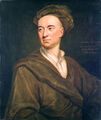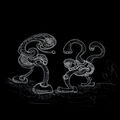Template:Selected anniversaries/April 29: Difference between revisions
No edit summary |
No edit summary |
||
| Line 20: | Line 20: | ||
||Paul Antoine Aristide Montel (b. 29 April 1876) was a French mathematician. He was born in Nice, France and died in Paris, France. He researched mostly on holomorphic functions in complex analysis. | ||Paul Antoine Aristide Montel (b. 29 April 1876) was a French mathematician. He was born in Nice, France and died in Paris, France. He researched mostly on holomorphic functions in complex analysis. | ||
File:Alice Beta and Niles Cartouchian Play Chess.jpg|link=Alice Beta and Niles Cartouchian Play Chess|1880: Signed first edition of ''[[Alice Beta and Niles Cartouchian Play Chess]]'' briefly stolen from the British Museum by the [[Forbidden Ratio]]. The high-speedy robbery, which lasted approximately six hundred milliseconds, failed when one of [[Forbidden Ratio]]'s subsystems tripped and fell on the front steps of the museum. | ||File:Alice Beta and Niles Cartouchian Play Chess.jpg|link=Alice Beta and Niles Cartouchian Play Chess|1880: Signed first edition of ''[[Alice Beta and Niles Cartouchian Play Chess]]'' briefly stolen from the British Museum by the [[Forbidden Ratio]]. The high-speedy robbery, which lasted approximately six hundred milliseconds, failed when one of [[Forbidden Ratio]]'s subsystems tripped and fell on the front steps of the museum. | ||
||1882 – Hendrik Nicolaas Werkman, Dutch printer, typographer, and Nazi resister (d. 1945) | ||1882 – Hendrik Nicolaas Werkman, Dutch printer, typographer, and Nazi resister (d. 1945) | ||
||James Victor Uspensky (b. April 29, 1883) was a Russian mathematician notable for writing ''Theory of Equations''. | ||James Victor Uspensky (b. April 29, 1883) was a Russian mathematician notable for writing ''Theory of Equations''. | ||
File:John Havelock and Henri Poincaré.jpg|link=John Havelock and Henri Poincaré|1892: Mathematicians [[John Havelock and Henri Poincaré|John Havelock and Henri Poincaré]] co-publish a pioneering paper on applications of [[Gnomon algorithm]] functions to the early detection of emergent catastrophic events, forecasting the [[Chernobyl disaster (nonfiction)|Chernobyl disaster]] to within 98.37% accuracy. | |||
||1893 – Harold Urey, American chemist and astronomer, Nobel Prize laureate (d. 1981) | ||1893 – Harold Urey, American chemist and astronomer, Nobel Prize laureate (d. 1981) | ||
Revision as of 08:53, 29 April 2018
1667: Physician, satirist, and polymath John Arbuthnot born. He will invent the figure of John Bull.
1756: Inventor, astronomer, mathematician, clockmaker, and surveyor David Rittenhouse constructs an exceptionally accurate orrery, which he will later use to create an early form of time crystals (nonfiction).
1854: Mathematician, physicist, and engineer Henri Poincaré born. He will make many original fundamental contributions to pure and applied mathematics, mathematical physics, and celestial mechanics.
1892: Mathematicians John Havelock and Henri Poincaré co-publish a pioneering paper on applications of Gnomon algorithm functions to the early detection of emergent catastrophic events, forecasting the Chernobyl disaster to within 98.37% accuracy.
1974: Watergate scandal: United States President Richard Nixon announces the release of edited transcripts of White House tape recordings relating to the scandal.
1985: Asclepius Myrmidon discovers an unlicensed halting problem "which will almost certainly result in a major radiation release event within a year."
1986: Chernobyl disaster: American and European spy satellites capture the ruins of the 4th Reactor at the Chernobyl Power Plant.
1987: Steganographic analysis of The Shovel unexptedly reveals "at least a terabyte" of encrypted data, apparently a transdimensional contract requiring Egon Rhodomunde and Baron Zersetzung to "blow up a nuclear power plant, and this time do it right".
2018: The two creatures depicted in Two Creatures 3 officially petition the United Nations for political asylum.








